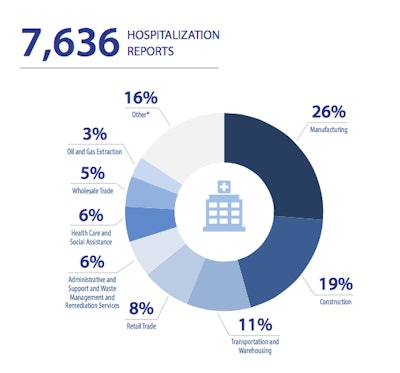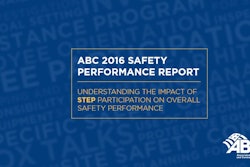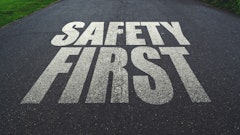
Since January 1, 2015, employers have been required to report sever work-related injuries to the Occupational Safety and Health Administration (OSHA) within 24 hours. After one year, OSHA believes the new requirement has been a success for safety. Over the last year, 10,388 severe injuries were reported — around 30 work-related injuries a day.
Of the 7,636 hospitalization reports recorded, 19% (1,451 injuries) were reported by the construction industry. Construction reported the second most hospitalizations after the manufacturing industry.
Of the 2,644 amputation reports, the construction industry accounted for 10% (264 amputation injuries) — a very distant third compared to the manufacturing industry's 57%. A combination of "other" industries reported a total of 11% of the amputation injuries.
Broken down even further, the construction industry had seven of the top 25 industry groups reporting severe injuries.
- Foundation, structure and building exterior contractors — 391 reports (ranked #1)
- Building equipment contractors — 343 reports (ranked #2)
- Nonresidential building construction — 271 reports (ranked #4)
- Utility systems construction — 201 reports (ranked #9)
- Highway, street and bridge construction — 162 reports (ranked #12)
- Other specialty trade contractors — 159 reports (ranked #13)
- Building finishing contractors - 124 reports (ranked #19)
Pros vs. cons
The positive news is that employers are reporting these injuries and, for the most part, fixing safety hazards to prevent future injuries. The negative news is that there were over 10,000 severe injuries in the U.S. last year — and that's only the ones reported. It's great that employers are taking this responsibility more seriously, but the construction industry still has a long way to go.
Is the new OSHA reporting requirement really making any difference in safety? OSHA thinks so.
With the new reporting program, OSHA's goals were to "better target compliance assistance and enforcement efforts to places where workers are at greatest risk" and "engage more high-hazard employers in identifying and eliminating serious hazards." OSHA says its data shows both goals are being met, and severe injury reporting has eliminated the potential for many more injuries in U.S. workplaces.
On the flip side, the agency acknowledges that some employers are still failing to report severe injuries. While OSHA says this is partly due to smaller companies not being aware of their reporting requirements, there are still many companies out their aware of the requirement and choosing not to follow it. And in some cases, employers who continue to blatantly try to hide safety hazards and violations from OSHA inspectors.
With the new reporting requirement, OSHA has been encouraging and enabling employers reporting severe work-related injuries to evaluate there workplaces and determine how to eliminate the hazards that caused the accidents without an on-site OSHA inspection.
Here again we can pit the positives against the negatives. It's great that employers are getting more involved in safety and accident prevention. However, OSHA is still running the risk of employers trying to skip out of this responsibility. That may be easier because OSHA is choosing to work with employers mostly through phone and email interaction and not as much on-site interaction.
Also, employers need to be more proactive to prevent accidents rather than just reactive after an accident occurs. Yes, reporting and remedying the situation may help prevent future accidents, but identifying and fixing safety hazards before ANY accidents occur would be even better. That's the ideal solution, but probably not a real option until all employers in hazardous industries make safety a much higher priority.
While OSHA sees the method of less on-site inspections after severe injuries as an opportunity to allocate its resources where they are most needed, it could also be a way to just make it easier for employers to say one thing and do another. Even required photo documentation of hazard remedies could be staged or faked — although I hope none of you would ever do that!
A long way to go
After one year of the reporting requirement, OSHA does believe the requirement has enabled the agency to learn about hazards or unsafe companies that may not have come across the agency's radar had the 24-hour reporting requirement not been enacted. However, the agency is planning even more outreach to mid- and smaller-sized companies who are still flying under the radar or unaware of the new reporting requirements.
The question remains, is the new OSHA reporting program really helping to improve safety on the jobsite? With only one year's worth of data, I think we will have to see what comes from the reporting over the next few years to gauge just how effective reporting is in reducing severe injuries — or how many employers will continue to ignore these requirements and continue to expose workers to injury risks.
New reporting requirement or not, 10,000 severe injuries is 10,000 too many.
What are your thoughts after the first year of OSHA's severe injury reporting requirement?
Do you see this requirement as making a difference in construction industry safety?
Share your thoughts in the comment section below.





![[VIDEO] OSHA to Require Paperwork on Any Worker Illness or Injury](https://img.forconstructionpros.com/files/base/acbm/fcp/image/2016/05/default.57449c34f352b.png?auto=format%2Ccompress&fit=crop&h=167&q=70&w=250)














